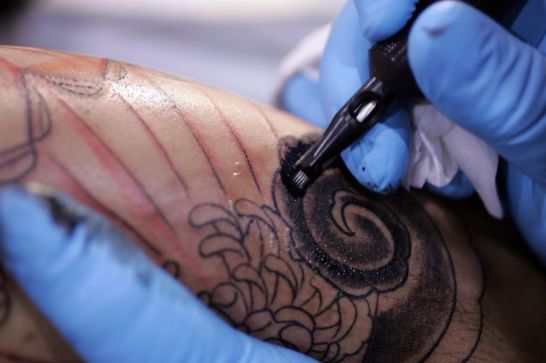
You’ve done your research, chosen the right board-certified plastic surgeon and gotten through your surgery without a hitch. Now you can’t wait to jump back into your daily routine, and maybe show off your fabulous results, right? Well, cool your jets, cowboy, because the truth is: you may not be ready.
According to statistics from the American Society for Aesthetic Plastic Surgery, in 2014, the top five surgical procedures performed were breast lifts and augmentations, eyelid surgery, liposuction, and tummy tucks. That’s a lot of collective recovery time. Since knowledge is power, we’ve put together a few guidelines for when it’s safe to get back to life after undergoing some of the most popular plastic surgery procedures, with the first rule of thumb being: listen to your surgeon. (Repeat 3x).
The single most popular surgical procedure for both men and women — with 300,000+ women and 40,000+ men opting for the surgery in 2014 alone — is liposuction, and your recovery time will likely be contingent on whether or not your surgeon used general anesthesia. Liposuction patients should typically be able to return to work within a few days and return to light, physical activity within about 10 days. The key word is “light”. Allowing your body to fully recover for at least three-weeks before returning to your butt kicking workout, strength training or intense running is imperative to achieving the best and safest results.
In the popularity department, breast augmentation comes in a close second to liposuction, with over 285,000 women opting for the procedure in 2014 alone. With self-care being as vital a component to your results as the surgery itself, you’ll need to take it easy for a while; regardless of how badly you want to show-off your new look.
Patients can typically return to work anywhere from a few days to a week post-procedure, with a few key rules. Do not strain the area. You may be able to tackle light activity, but anything that strains the pectoral muscles or is highly uncomfortable or painful should be avoided. Your surgeon will likely recommend that you hold off on exercise for at least 2 to 3 weeks post-surgery, at which point you can start by performing light exercises depending on your level of comfort. Performing more physical tasks like cardio and weight training will happen gradually, but again, straining the pectoral muscles is a no-no.
Much of the same rules apply to a breast lift procedure. The most important gauge of how quickly you can get back to 100% is your own comfort level and your surgeon’s aftercare direction. If you’re in pain or at a high level of discomfort, or if your surgeon directs you to take it easy for a bit longer, it’s important that you take a step back.
In 2014, 150,000+ women chose to undergo a tummy tuck procedure, which puts this on our top 5 list of most popular plastic surgeries. As with all procedures, the most important aftercare instructions will come from your surgeon, which you will follow to a ’T’, right? Right.
Your surgeon will likely recommend a heavy dose of rest and relaxation post-surgery, including having someone to help you around the house for a few days to a week. Most patients will be able to return to work after about 2 to 3 weeks, but should avoid heavy lifting for about 4 – 6 weeks. Walking around (with assistance as needed) will help alleviate concern of swelling and blood clots, but that’s likely to be the extent of your exercise for between 3 – 6 weeks. Your doctor will be able to better advise you when you’re ready to hit the gym again, but be prepared to lay off any heavy aerobic activity for up to two months before you’ve fully recovered.
Eyelid surgery, while seemingly not as invasive as some of the other procedures we’ve discussed, comes with its own set of aftercare instructions that will vary greatly from patient to patient. Generally, you’ll want to take at least 5 days – 1 week off before returning to work and be sure to check with your surgeon when it’s okay to apply makeup to the area. At 2-3 weeks you’ll likely be able to start incorporating light exercise, but keep in mind that activities like exercise, bending, lifting and crying — lay off those post-surgery chick flicks — all increase blood flow to the eyes and should be avoided until your surgeon gives you the go ahead.
Whether you’re recovering from a cold or from a major surgery, it’s always tempting to get back to the gym, work, and life — sometimes before you’ve really given your body the time it needs to heal. The decision to return to an active, normal lifestyle is reliant on a number of variables — what your job entails, your exercise routine, the procedure you underwent, and how your body is responding to the surgery itself. Since we’re uniquely different creatures, it’s important to give your body every chance to heal without taxing it too soon post-surgery. They don’t call the “healing process” a “process” for nothing, folks.





